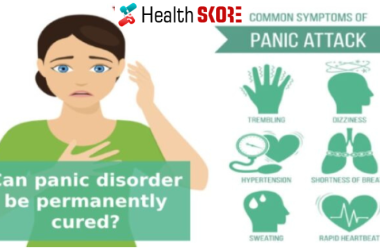Alprazolam is an anti-anxiety prescription medication. It belongs to a group of drugs called a benzodiazepine. The benzodiazepine family is known for its calming effect inside the human body. This generic medication is mainly used for the short-term management of anxiety disorder, specifically for panic disorder. You may Buy Alprazolam online also for the treatment of nausea due to chemotherapy. Alprazolam basically affects chemicals in the brain that may be unbalanced in people with depression.
You may order Alprazolam online under the brand name Alprazolam Intensol, Xanax, and Xanax XR.
Chemical properties
This medication is a type of benzodiazepine drug that is a class of central nervous system active compounds. Primarily, it is a white crystalline powder that is soluble in ethanol and methanol. Alprazolam has no appreciable solubility in water at physiological pH.
Inactive ingredients
Alprazolam contains some inactive ingredients, including corn starch, cellulose, docusate sodium, magnesium stearate, lactose, sodium benzoate, and silicon dioxide.
History and legal status of Alprazolam
This medication was patented in the year 1971 and approved for medical use in the United States in the year 1981. In 2016, Alprazolam was the 19th most prescribed drug in the United States, with more than 27 million prescriptions.
Alprazolam is a schedule IV-controlled substance in the United States and the most common drug of abuse.
How supplied and dosage forms
| Dosage Form | Brand name | Strengths |
| Concentrate oral | ALPRAZolam Intensol | 1mg per mL |
| Tablet oral | Xanax | 0.25mg, 5 mg, 1 mg, and 2 mg |
| Tablet oral | Generic | 0.25mg, 0.5 mg, 1 mg, and 2 mg |
| Tablet Disintegrating, oral | Generic | 0.25mg, 0.5 mg, 1 mg and 2 mg |
| Tablet extended-release, oral | Alprazolam XR | 0.5mg, 1 mg, 2 mg and 3 mg |
| Tablet extended-release, oral | Xanax XR | 0.5mg, 1 mg, 2 mg, and 3 mg |
| Tablet extended-release, oral | Generic | 0.5mg, 1 mg, 2 mg, and 3 mg |
What are the uses of Alprazolam?
This generic medication is used primarily for the treatment of Panic disorder, short-term treatment of anxiety disorder, or anxiety linked with depression. The doctors do not prescribe this medication for the treatment of daily life stress.
You may use Alprazolam as a part of combination therapy. This means you may take this medication with other drugs.
How does Alprazolam work?
This benzodiazepine drug works by providing a calming effect inside the human brain. Alprazolam attaches to certain benzodiazepine receptors in the nervous system and brain. This process boosts the activity of a chemical called GABA and treats anxiety and panic symptoms.
Usual adult dose for:
Anxiety
- Initial dosage: 0.25 mg to 0.5 mg orally 3 times a day
- Dosage adjustment: You may increase your daily dosage gradually after an interval of 3 to 4 days by not more than 1 mg per day.
- Maximum: 4 mg per day (when needed)
Panic disorder
- Initial dosage: 0.5 mg to 1 mg orally once a day
- Dosage adjustment: Patients may increase their daily dosage gradually after an interval of 3 to 4 days by not more than 1 mg per day.
- Maximum dosage: 10 mg per day (only on the recommendation of medical professionals)
Before taking Alprazolam
This medication may be habit-forming, cause of overdose, other severe adverse effects. You are advised to notice some crucial points before initiating the therapy.
Do not take Alprazolam if you have;
- allergic to this drug or other benzodiazepines, including Diazepam, Lorazepam, Oxazepam, etc.
- Narrow-angle glaucoma
- If you are taking itraconazole
Take a medical consultation if you have or ever had;
- Liver or kidney disease
- Epilepsy or seizure
- Breathing disorder or asthma
- A history of drug or alcohol addiction
- If you also use an opioid medication
- If you are a nursing mother or pregnant etc.
Side effects
There is a possibility of Alprazolam side effects due to its high potential and addictive character. Most of the side effects are occur when a user does not take medication correctly. In some cases, side effects may usually arise, even while using the drug properly as prescribed.
Much common
- discouragement
- drowsiness
- feeling sad or empty
- irritability
- lack of appetite
- lightheadedness
- loss of interest or pleasure
- relaxed and calm
- shakiness and unsteady walk
- sleepiness or unusual drowsiness
- slurred speech
- tiredness
- trouble concentrating
- trouble performing routine tasks
- difficulty sleeping
- difficulty speaking
- Being forgetful
- changes in patterns and rhythms of expression
- clumsiness or unsteadiness
- difficulty with coordination
- discouragement
Less common
- changes in behavior
- chills
- clay-colored stools
- confusion about identity, place, and time
- cough
- dark urine
- the decrease in the frequency of urination
- the reduction in urine volume
- dry mouth
- ear congestion
- environment seems unreal
- fainting
- fear or nervousness
- feeling of unreality
- feeling warm
- fever
- a general feeling of discomfort or illness
Rare
- decreased awareness or responsiveness
- deep or fast breathing with dizziness
- ear pain
- false or unusual sense of well-being
- fast, pounding or racing heartbeat or pulse
- feeling jittery
- feeling unusually cold
The above-given list is not a full list of the side effects of this medication. There are some possibilities of other side effects during the therapy. You are advised to take immediate medical help if you have any abnormal changes while using such a drug.



